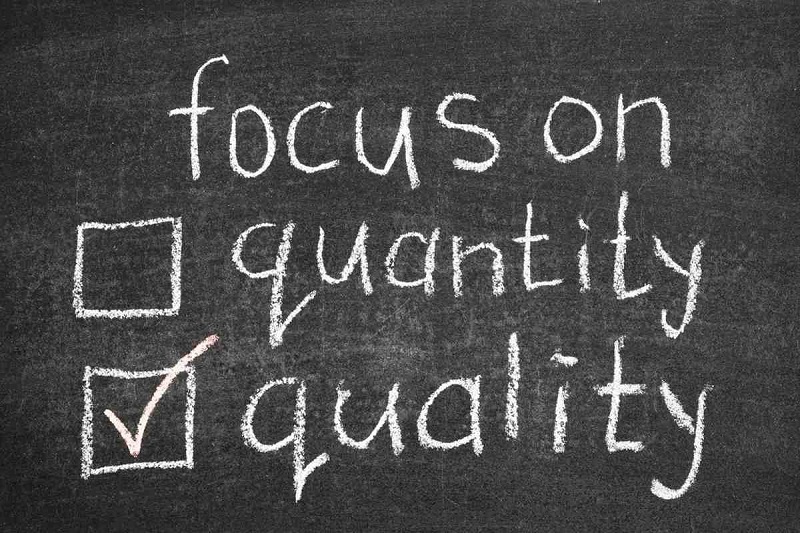Simply caring about the well-being of others and the environment and actually taking serious steps in order to make a change, as small and as insignificant as it may seem, are two very different things. The clothes we buy can play a vital role regarding whether one supports companies that are inhumane companies or those that are more conscious. Fast fashion is good for no one but the company owners that get all of the profit at the end. Neither the makers of the items nor the wearers themselves are ripping some benefits, although, at a first glance, it may seem that being able to choose from a vast array of clothes for affordable prices is a great deal.
Apart from the fact that fast fashion means fast production, it also stands for how fast what you are buying today is going to get out of fashion. And the answer is – two weeks. This industry is not concerned with the design, which is a slow process when done right, all they do is copy copy copy, which is a lot faster than coming up with something yourself.
There may be some people who’d say “Well, that’s the way it is, at least I get to experiment with lots of different pieces for less…” however, this is not the smartest way to go about it. Even though the price tag is small, first of all, you are still paying less than what it’s worth. Secondly, these items won’t last you as long, won’t feel and look as good on you and also, won’t help you develop your real style. And lastly, the people who work for the fast fashion industry are very underpaid and work in hobble conditions and the only way to have a say in this is to let the industry know that this is not what you’re willing to spend money on.

That being said, here’s what you can keep in mind if you want to start making better choices for yourself that impact others as well.
Learn the Easy Ways to Check Important Elements
1. Good Fit and Good Cut
Take into account whether the item can give you enough breathing space and whether it is stretchy. If buying online, make sure you check if the specifications say that it’s stretchy. Beware of side seams that twist as these are another thing that occurs when manufacturers simply don’t care and they such clothes look very cheap and unsightly.
2. Solid Colour Over Prints
The reason to choose solid instead of print is that there is a bigger chance that on the printed version, they’ve cut corners somewhere else. Also, printed shirts and dresses are generally riskier to wash cause the colours may bleed into each other, especially if they’re vibrant.
3. Fibres
The previous tips are something you can use when you aren’t sure whether the brand you’re considering is fast fashion or not, so you just want to make sure that either way you are on the safer side and you’re not getting something worthless. When it comes to fibre, however, it’s much more telling.
Fibres are generally divided into natural and synthetic ones. The core 4 natural ones are cotton, silk, linen and wool. The “new” natural ones (fibres with better properties, still derived from natural materials) are modal (better than cotton), viscose (made from wood), tencel (made from bamboo). The most common synthetic ones are acetate (this one is not breathable), rayon (substitute for silk), nylon, acrylic (substitute for wool), spandex (very elastic one), polyamid and elathane.
What makes the matter complicated is the fact that many clothes are a mixture of natural and synthetic materials, which is not a bad thing if done right. For instance, organic dresses that are 93% bamboo and 7% spandex means that you’re getting the softest and most comfortable type of dresses that can also hug various types of figures well due to their elasticity. It is not a coincidence that I mentioned bamboo right away as the best example and not cotton) and that’s because cotton clothes are also being overproduced and are a large part of the fast fashion problem. What’s more, bamboo is kinder both to your skin and the environment.
Trendy and Stylish are Not the Same
In order to get out of the vicious circle of fast fashion, it is very important to learn how to resist the temptations thrown at you on a daily basis. Instead of turning buying clothes into a thing that we do as often as buying groceries, make it feel like a real treat that you do more rarely, but with greater attention to detail, thus allowing yourself to spend more on something you’ll be able to actually see yourself wearing again and again.
The Lovely Contradiction of Fewer Items, but More Choices
Reducing your wardrobe size and learning how to maintain a smaller wardrobe is a great place to start. Over-consumption is one of the main factors that drives fast fashion and that in turn leads to rapid depletion of our natural resources. A smaller wardrobe is easier to manage and something like the project 333 experiment can help you define your personal style and make it easier for you to decide what to wear for any occasion. By being challenged to pare down your clothing to 33 items, you ‘ll be forced to identify the most important, most versatile, and best fitting items, such as the perfect little black dress, the comfiest organic dresses, the best fitting, high-quality jeans etc.











